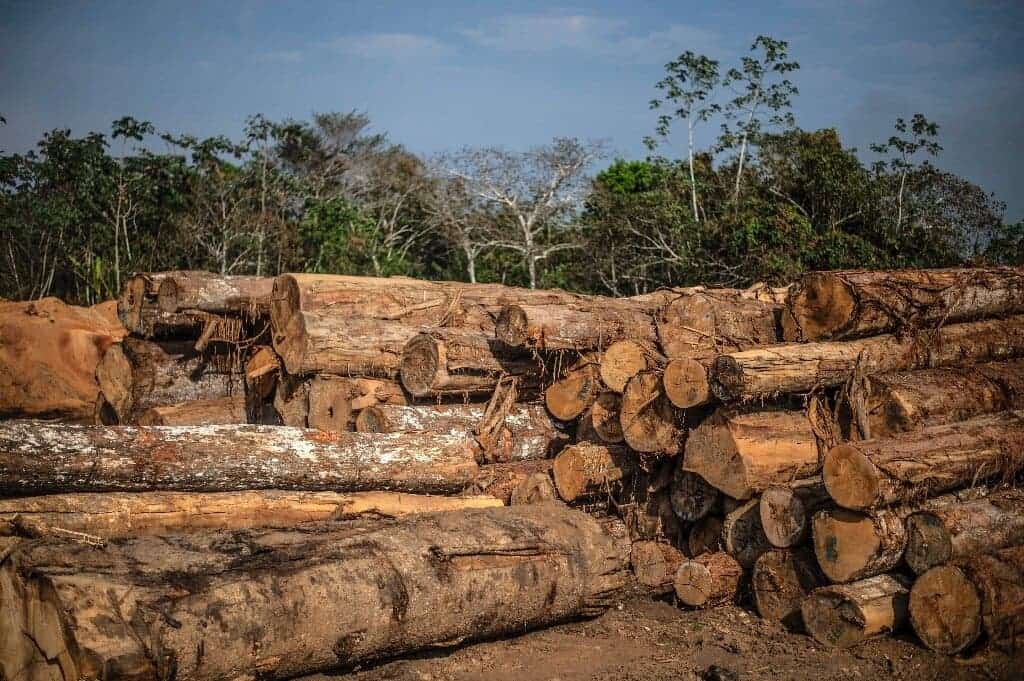Armed with satellite data and smartphones, indigenous people living in the Peruvian Amazon equipped with were able to drastically reduce illegal deforestation, a new study found. Researchers found a 52% drop in deforestation in the first year of the study and a 21% in the second one in villages assigned with proper equipment and training.

Over a third of the Amazon rainforest is located in the territory of over 3,000 acknowledged indigenous communities. For decades, these areas have been threatened by outsiders who cut down trees for a range of reasons, including mining, logging and planting of illicit crops such as coca plants for cocaine production.
Over the past 40 years, governments and NGOs have invested in the use of satellite monitoring systems for the detection and measurement of deforestation. Brazil, Peru, and Colombia have adopted alert systems that generate remote-sensed deforestation data that measure tree cover loss. Nevertheless, there’s little evidence that this information reaches the indigeneous communities.
With this in mind, researchers wanted to find out whether putting information directly into the hands of the communities would make a difference. They identified 76 remote villages in the Peruvian Amazon, with 36 randomly-assigned to participate in the monitoring program. Thirty-seven other acted as the control group and continued with their current forest management practices.
The study was led by researchers from New York University and Johns Hopkins University in collaboration with Rainforest Foundation US (RFUS) and the Indigenous People’s Organization of the Eastern Amazon (ORPIO). It was carried out in the communities Shipibo and Nueva Saposoa, with photos supplied by Peru SAT-1, a satellite launched in 2016 that flies over the country.
Empowering communities
In each selected community, the researchers trained three members in the use of technology, showing them how to perform patrols to verify deforestation. Photos and GPS coordinates of suspected deforestation activity were loaded into USB drives and delivered to them by couriers. The information was downloaded to smartphone apps that can guide the community monitors to the locations.
If the monitors confirmed an unauthorized deforestation, they would report to a general assembly of community members to decide on the best course of action. When drug dealers were involved, the community could report the issue to law enforcement. If the activity was seen less risky, they would intervene directly, driving the offenders of their land.
Over the first year of the program, tree cover loss decreased by 8.4 hectares. Notably, this was concentrated in the communities most vulnerable to deforestation. In the second year, the effects of monitoring were substantially attenuated, with a decrease in tree cover loss of 3.3 hectares. Jacob Kopas, co-author, described this as a “sizeable impact.”
“We saw evidence of fewer instances of tree cover loss in the programme communities compared with control communities,” Kopas told the BBC. “The communities that were most threatened, the ones that had more deforestation in the past were the ones pulling more weight and were reducing deforestation more than in others.”
Deforestation in the indigenous regions of the Amazon is a big problem, so the results of the program were highly welcomed. Jorge Perez Rubio, the president of the Loreto regional indigenous organization (ORPIO), where the study was carried out, told the BBC the study proved that supporting communities “can help reduce deforestation.” It is hoped that a similar approach can help reduce deforestation in other areas of the Amazon as well.
The Amazon rainforest covers several countries of Latin America, with a territory as big as five million squared kilometers (two million squared miles). Preserving it is seen as vital to avoid the worst effects of the climate crisis. Nevertheless, deforestation has expanded in recent years, particularly in Brazil. Recognizing communities’s rights to their territories can be an effective solution ahead, the researchers concluded.
The study was published in the journal PNAS.






